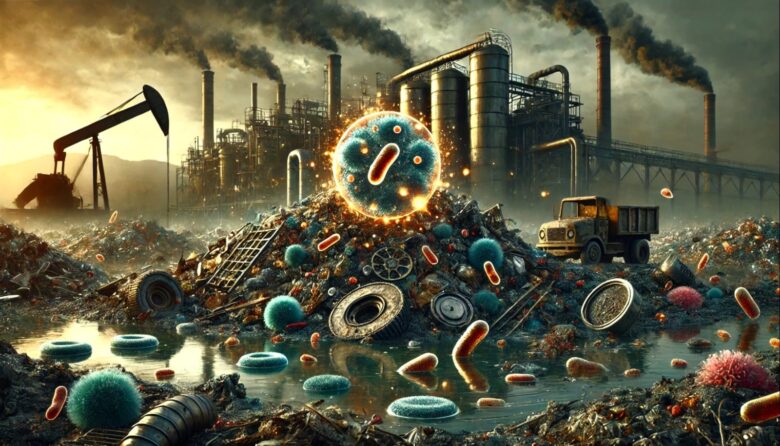We think that the universe began with an explosion – a bang, but actually the early universe was like a nervous kid performing on stage for the first time. It took its time until every piece fit together perfectly. Billions of years later, we see a cosmos that fits human life perfectly – in fact, too perfectly.
There is no possible way to explain why the universe has everything in place so precisely. It’s as if Alan Turing managed to build the universal Turing machine by joining random wires and hoping for the best. But how do you get billions upon billions of cosmic bodies governed by precise mathematical laws all from a cosmic explosion? How does order come out of chaos?
In physics, the riddle of why the random universe fits together so perfectly is known as the fine-tuning problem. The universe extends 46 billion light years. As the early universe expanded, it began to form according to specific rules that we call the constants of nature.
The problem is, the order and pattern had to come from somewhere, and the only somewhere anyone can prove is the big bang. But the big bang was totally chaotic until suddenly it wasn’t.
The physics community accepts that fine-tuning exists. Even a minutiae variation in gravity, mass or electric charge would have caused the baby universe to either collapse in on itself or fly apart too fast for atoms to form. Supernova explosions that occurred billions of years ago are responsible for creating all of the heavy elements in nature, such as calcium, phosphorus, iron, and cobalt to name a few. Gravity caused the atoms of these elements to clump together and eventually they wound up inside an ancient solar nebula where all the planets, including our own, formed. Iron that makes up your blood came from a supernova that exploded eons ago.
The specifics of the explosion are determined by the strong force. If this force were different as little as 2% percent, there would have been no supernova explosions, no formation of heavy elements and therefore no life as we know it. The Earth (out of all the places in the universe) exists in the Goldilocks zone, where the conditions for life are perfect. The sun happens to emit most of its radiation in just the right part of the spectrum for the plants to feed on. The gravitational constant, the speed of light, Earth’s rotation, the decay rate of atomic particles, the rate of inflation, the big bang ripples, the uncertainty magnitude – all are in the exact order of magnitude for life to exist. In the case of gravity, variation of even 1/10^100 percent would have made life impossible.
In fact, Stephen Hawking wrote, “If the rate of expansion one second after the big bang had been smaller by even one part in a hundred thousand million million, the universe would have re-collapsed before it ever reached its present size.” How can the universe with its millions of processes be so accurate in all? How is the universe so fine-tuned? Are these just coincidences?
Coincidences aren’t science. Most of the scientific community believes in fine-tuning and backs it up with the anthropic principle. The anthropic principle, presented first by Brandon Carter in 1973, claims that there can be no knowable universe without human beings. The evolution of the cosmos must necessarily lead to conscious beings. This principle allows Earth to stop being a random speck of dust afloat in the cosmic ocean.
Consider the process of the creation of DNA. DNA took 3.7 billion years from the first prototypes and 10 billion years of cosmic existence to reach this point. On the way it took 3 million irregularities and alterations along with the mutations caused by cosmic rays and produced life. Casts doubts, doesn’t it? Physicists like Paul Dirac have also tried to put the anthropic principle in mathematical terms.
According to the anthropic principle, the universe is self-organizing, driven by its own working process. Each new creation of layer must regulate to the prior layer. It does not give us an answer to why the constants or other factors have such values, but it does tell us that it is not just a coincidence and we may one day solve it mathematically.
Viewed this way, fine-tuning does not seem like a mystery. No one finds anything mysterious about how the train gear in a car’s transmission fits together precisely. If it didn’t, the car couldn’t operate. Same way, the operational universe must be fine-tuned.
On the other hand, another view is that fine-tuning is just a case of coincidence piled higher and higher. The only explanation is that humans happen to exist in the right place at the right time. This is called the multiverse solution. It states that there are 1^500 universes – a number greater than the number of atoms in the universe – with different laws and we happen to exist in this one which turned out to be perfect. There is nothing special in the creation of humans or the universe.
This viewpoint is favored by string theory proponents including Stephen Hawking. This path has no concrete evidence but a lot of possible outcomes.
Do humans exist on the planet by sheer luck? Or do we exist because it was the main aim of the universe? Most people answer according to their worldview, which can be scientific or religious or a blur of both. Yet one thing is certain. We participate in the universe by finding patterns and where they come from – a goal worth pursuing for a lifetime.







3 thoughts on “The Fine-Tuning of the Universe”
The question of the atheist/antitheist me is this:
How are we sure that this “order” of ours is not the exact opposite?
Who decides what is ordered and what isnt?
Are we talking order in the sense that fits our human perception (which is the only kind we can have,so far no extra sensory perception has been proved to exist)?.
Is it real order the expanding universe?
Or is it that in reality this “fine tuning” is just what makes us humans feel confortable ?
Lets turn it upside down .
Order was the beginning.
Then came the thing we named big bang and destroyed order.
What we see today is the leftovers of the order ,the remnants of a pre-universe , where real order existed.
This was the pinnacle of order.
Something we humns are not capable of understanding (yet?).
The anthropic principle, I find it arrogant.
The universe will happily go on after humans,the earth and our solar system have turned to stardust again.
The multiverse theory has as much evidence to support it, as my own theory.(but lots more funding for research)
And has as much potential to be proven in the far future.
No? 🙂
Regards 🙂
Hi, thank you for reading the article and presenting your views/questions.
The scientific community consideres the events after the big bang as ordered. The reason for this is that at the time of the big bang, the universe was immensly hot and dense. The laws of physics did not make any sense and matter and energy were indistinguishable. Scientists call it the “Big bang singularity” or the “Initial singularity”. After the big bang, universe started to cool down, subatomic particles were distinguishable and the forces worked seperately. Atoms formed together to make matter and that in turn made everything in the universe. The universe was calm and the events unfolded in a regular pattern; hence order.
Yes, we call these events ordered because – to our knowledge – we are the only beings who have studied these events and hence are capable of giving input regarding them.
We don’t know what happened before the big bang. We only know the what happened fraction of a second later than big bang. we have theories and suggestions but nothing is proven. There are some theories that suggest there might have been another universe before the big bang ( read more at: https://www.livescience.com/65254-what-happened-before-big-big.html ), but nothing has been detected. There are endless posibilities in science; our universe might be the remenents of a past universe or maybe the first universe to ever exist. Your theory has the same probability of being the right one as any other regarding this topic.
The aim of this article was to explain how the conditions and variables of the universe after the big bang made the growth of the universe and birth of the life (us to our knowledge) possible.
I hope this response was satisfactory. Please do not hestitate to reply. Science is all about questioning.
regrads,
Sohaib Salman
Pingback: The Rise, Evolution & Decline of Ether - Effective Thoughts